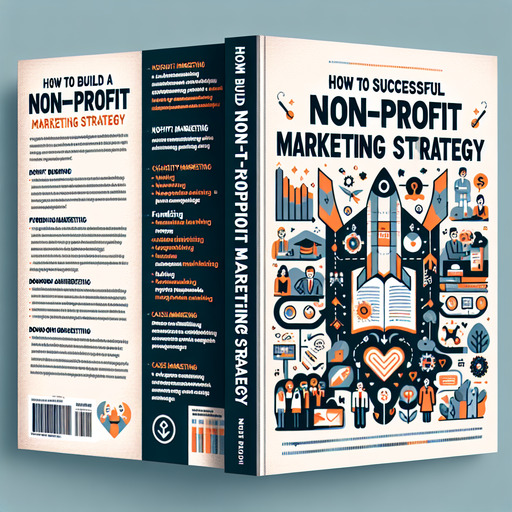
-
Table of Contents
- Introduction
- How to Build a Successful Non-Profit Marketing Strategy: Non-Profit Marketing Strategies, Charity Marketing, Non-Profit Social Media, Fundraising Marketing, Non-Profit Digital Marketing, Non-Profit Branding, Non-Profit Outreach, Donor Engagement, Non-Profit Advertising, Cause Marketing
- Q&A
Discover the essential steps to build a successful non-profit marketing strategy and make a lasting impact! Learn more here.
Introduction
Building a successful non-profit marketing strategy is essential for organizations aiming to amplify their impact, attract donors, and engage volunteers. A well-crafted marketing plan not only raises awareness about the cause but also fosters a strong community of supporters and stakeholders. This introduction will guide you through the fundamental steps of creating an effective marketing strategy for your non-profit, from understanding your target audience and setting clear objectives to leveraging digital tools and measuring success. By following these guidelines, your non-profit can enhance its visibility, drive meaningful engagement, and ultimately achieve its mission more effectively.
How to Build a Successful Non-Profit Marketing Strategy:
Non-Profit Marketing Strategies, Charity Marketing, Non-Profit Social Media, Fundraising Marketing, Non-Profit Digital Marketing, Non-Profit Branding, Non-Profit Outreach, Donor Engagement, Non-Profit Advertising, Cause Marketing
Building a successful non-profit marketing strategy requires a comprehensive approach that integrates various elements to effectively communicate your mission, engage donors, and drive fundraising efforts. To begin with, understanding the unique aspects of non-profit marketing is crucial. Unlike for-profit organizations, non-profits must focus on promoting their cause and demonstrating the impact of their work. This necessitates a clear and compelling narrative that resonates with potential supporters and stakeholders.
One of the foundational steps in developing a non-profit marketing strategy is to establish a strong brand identity. Non-profit branding goes beyond just a logo or tagline; it encompasses the values, mission, and vision of the organization. A consistent and authentic brand helps build trust and recognition, which are essential for long-term success. To achieve this, ensure that all marketing materials, from your website to social media posts, reflect your brand’s core message and visual identity.
Transitioning to digital marketing, it is imperative for non-profits to leverage online platforms to reach a broader audience. Non-profit digital marketing includes a variety of tactics such as search engine optimization (SEO), email marketing, and content marketing. By optimizing your website for search engines, you can increase visibility and attract more visitors. Email marketing, on the other hand, allows for personalized communication with your supporters, keeping them informed and engaged with your initiatives.
Social media is another powerful tool in the non-profit marketing arsenal. Non-profit social media strategies should focus on creating engaging content that encourages interaction and sharing. Platforms like Facebook, Twitter, and Instagram offer opportunities to showcase your work, share success stories, and mobilize supporters. Regularly posting updates, hosting live events, and utilizing hashtags can help amplify your message and foster a sense of community among your followers.
Fundraising marketing is a critical component of any non-profit marketing strategy. Effective fundraising campaigns require a mix of creativity and data-driven tactics. Storytelling plays a significant role in fundraising marketing, as it helps potential donors connect emotionally with your cause. Highlighting personal stories of those impacted by your work can be particularly compelling. Additionally, using data to segment your audience and tailor your appeals can increase the likelihood of donations.
Non-profit outreach efforts should also include partnerships and collaborations. Building relationships with other organizations, businesses, and influencers can expand your reach and resources. Cause marketing, where a non-profit partners with a for-profit company, can be mutually beneficial. These partnerships can enhance visibility, attract new supporters, and generate additional funding.
Donor engagement is essential for sustaining long-term support. Regular communication and recognition of donors’ contributions can foster loyalty and encourage repeat donations. Personalized thank-you notes, updates on how their contributions are making a difference, and exclusive events for donors are effective ways to show appreciation and keep them engaged.
Non-profit advertising, whether through traditional media or online ads, can further amplify your message. Paid advertising campaigns should be strategically planned to target specific demographics and maximize return on investment. Utilizing analytics to track the performance of your ads can provide valuable insights and inform future marketing efforts.
In conclusion, a successful non-profit marketing strategy is multifaceted and requires a cohesive approach that integrates branding, digital marketing, social media, fundraising, outreach, donor engagement, and advertising. By focusing on these key areas and continuously evaluating and refining your tactics, your non-profit can effectively communicate its mission, engage supporters, and achieve its goals.
Q&A
1. **Question:** What are the key components of a successful non-profit marketing strategy?
**Answer:** The key components of a successful non-profit marketing strategy include:
– **Clear Mission and Vision:** Define the organization’s purpose and long-term goals.
– **Target Audience Identification:** Understand and segment the audience to tailor messages effectively.
– **Compelling Storytelling:** Use narratives that resonate emotionally with the audience.
– **Multi-Channel Approach:** Utilize various platforms such as social media, email, events, and traditional media.
– **Engagement and Community Building:** Foster a sense of community and encourage active participation.
– **Consistent Branding:** Maintain a cohesive and recognizable brand identity.
– **Data-Driven Decisions:** Use analytics to measure performance and inform strategy adjustments.
– **Partnerships and Collaborations:** Leverage relationships with other organizations and influencers.
– **Fundraising Integration:** Align marketing efforts with fundraising goals and campaigns.
– **Regular Evaluation:** Continuously assess and refine the strategy based on feedback and results.